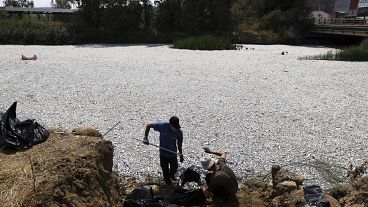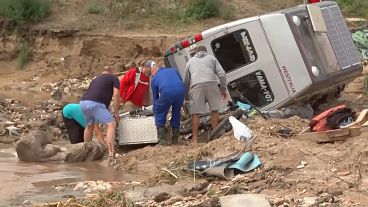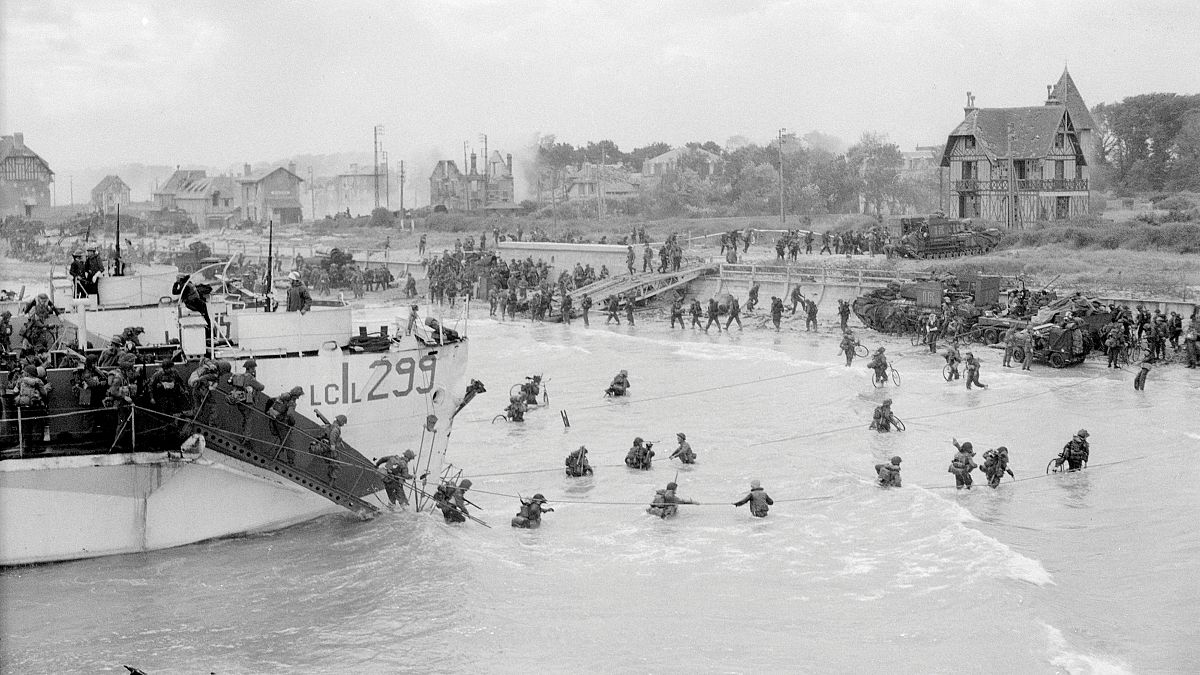D-day in numbers.
The Allied forces landing operation in Normandy on June 6, 1944, is easily the largest air, sea, and land invasion in history.
They set sail in 6,939 vessels — an impressive armada for a single naval operation.
They had 4,126 boats and barges, landing ships and landing craft in military terms, participating in the assault phase entitled “Operation Neptune” in 47 convoys.
The operation notably included:
- 7 battleships
- 20 cruisers
- 221 destroyers, frigates and corvettes
- 495 patrol boats
- 287 minesweepers
- 58 submarine chasers
- 2 submarines
Meanwhile, 864 boats were used for purely logistical reasons, serving as floating hospitals or transportation for food and ammunition.
Waves of tens of thousands of men
156,177 troops were deployed throughout the day from five infantry divisions and three airborne divisions. 133,000 of those men were sent to five beaches chosen by the military high command.
- 58,000 Americans on Utah and Omaha beaches
- 54,000 British on Gold and Sword beaches
- 21,000 Canadians on Juno beach
The Kieffer commando — a group of 177 French "green berets" — also landed on Sword Beach, integrating with the British Royal Marines.
The airborne assault was equally impressive: 23,000 men (13,000 Americans and 10,000 British) landed by parachute or glider in Normandy or on the Cotentin Peninsula.
The German army destitute on the coast
The Germans were wildly outnumbered.
The German's 7th army counts in its ranks around 150,000 men but they are spread throughout all of Normandy.
Only 50,000 in six infantry divisions are stationed in the landing zone, but Operation Neptune brought in 20,000 military vehicles including a thousand tanks.
The Germans have only a small footprint:
- 9 torpedoes
- 4 destroyers
- 30 submarines and patrol boats
The skies are empty — the Germans only have a few dozen fighter jets and bombers in the region. Most of their combat aircraft are on the Russian front. But in just 24 hours on June 6, 11,500 Allied aircraft crossed the sky.
- 5000 strike fighters
- 3000 bombers
- 3500 gliders
Civilian bombing casualties
The sheer amount of bombs dropped is scary: almost 12,000 tonnes in one day.
Civilians paid a heavy price. By the morning of June 7, there were 3,000 dead in Normandy and by September 1944, the death toll had risen to 20,000 and 150,000 were forced to flee their homes.












